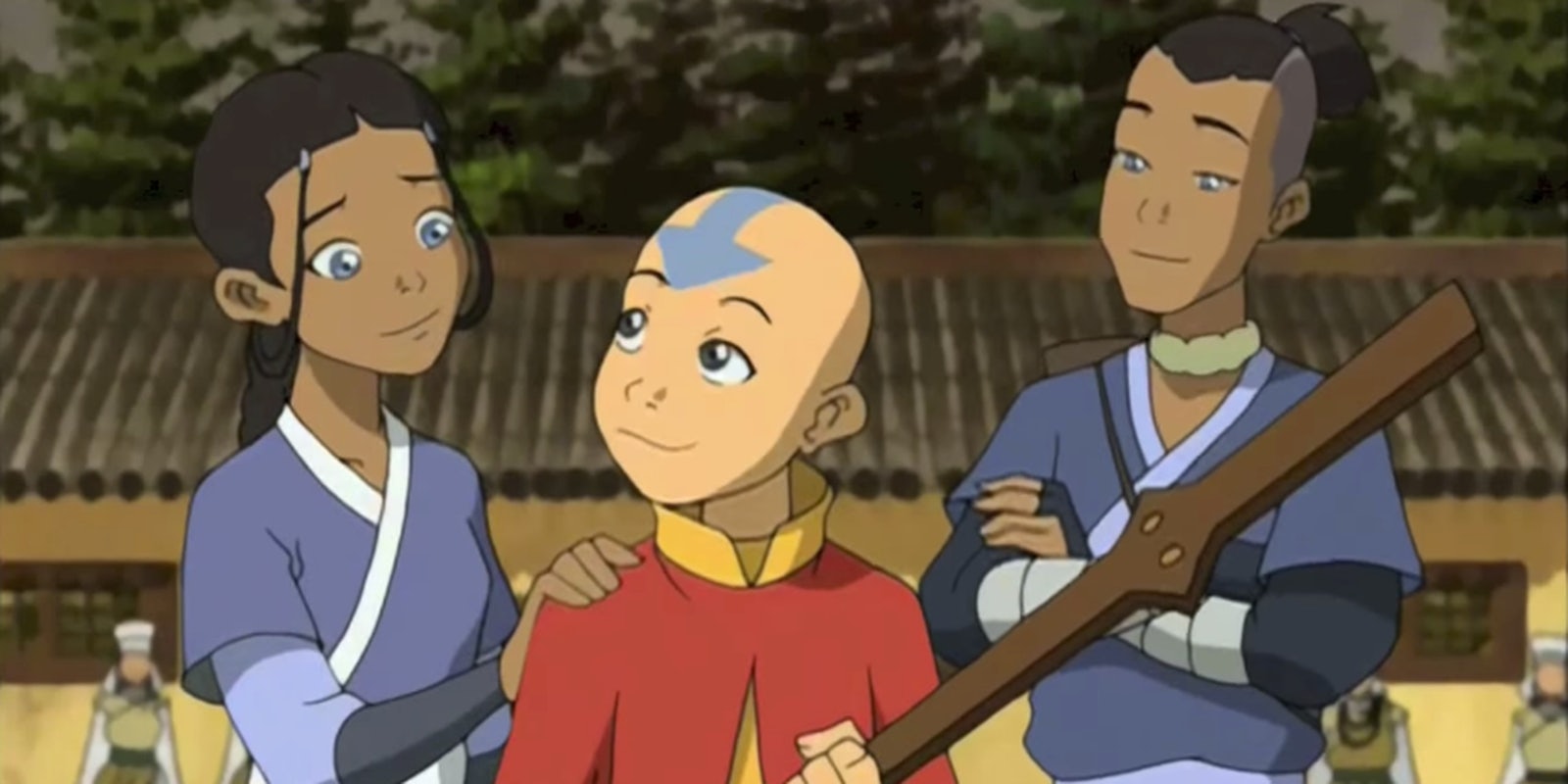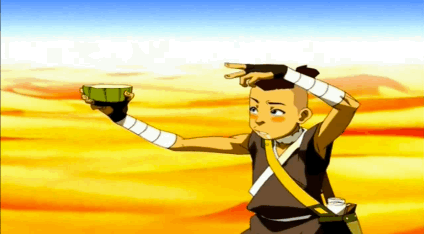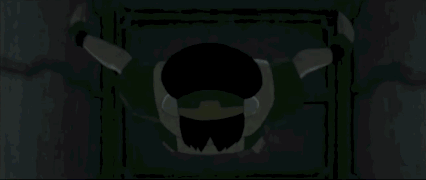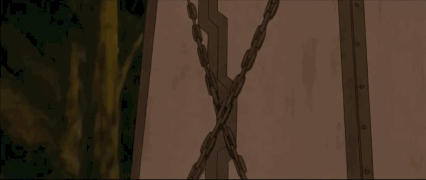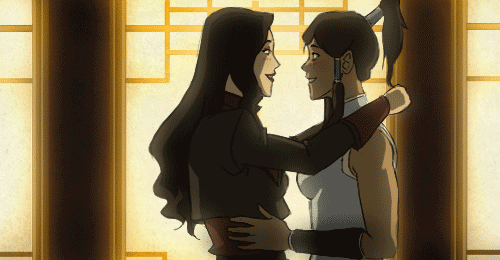The hype for The Legend of Korra is at an all-time high, with the premiere of the third season set for Friday.
Fans, who went into a kind of dormant calmness after the end of Season 2 in November, have now been whipped into full-on chaos. Partly to blame are four episodes of the upcoming third season that were leaked online. In a likely attempt at damage control, Nickelodeon released a trailer and announced the premiere date for the third season in the span of just two weeks.
While the trailer promises a season of change (after all, it is the tagline), it shows a character long teased: Zuko, the former Firelord, and one of the main characters from Avatar: The Last Airbender.
It’s impossible to talk about Korra without mentioning its predecessor, which is widely regarded by TV buffs as one of the best shows on television in the past 10 years and compared to the likes of The Sopranos, The Wire, and Battlestar Galactica.
The show first premiered on Nickelodeon in 2005 and lasted only three seasons, but in the span of 61 episodes, it managed to tell a complete and complex story with a wide variety of flawed, fully-developed characters and incredible imagery.
Want proof? Just watch the Agni Kai (firebender duel) between Zuko and his sister Azula.
It may or may not be anime, depending on who you ask, but if you didn’t catch the original run, chances are you know somebody who’s been trying to get you to watch. The Mary Sue’s Rebecca Pahle is one of many people finding it years after it went off the air.
The show has inspired plenty of cosplay over the years, and even now you can find a few Avatar and Korra cosplayers at Comic-Con. Many of those who loved Avatar have embraced, Korra, which takes place 70 years after the events of Avatar. It’s also made by the same duo who created the original.
But what is it about these kid’s channel shows that draws in so many fans?
“Everything changed when the Fire Nation attacked”
Avatar is the story of Aang, a 12-year-old Airbender who lives in a world where people can control the four major elements: water, earth, fire, and air. For the last 100 years, he’s been asleep in an iceberg while the Fire Nation has been trying to take over the world.
During the run of the series, he has to learn to master all four elements, something every Avatar does, so that he can defeat the Firelord. Along the way he gets help Katara, a waterbender, and her brother Sokka, as well as Toph, a blind earthbender who is a master at her craft, and later on, Zuko, a firebender and the Firelord’s banished son.
It’s a deeply complicated show that doesn’t shy from the nasty stuff; in the third episode, Aang discovers that all of his people were killed in a genocide 100 years ago by stumbling onto their skeletons and much of the third season deals with the conflict between Aang’s morals as an Airbender monk and his duty as the Avatar to kill the Firelord. Katara spends much of the series hating the Fire Nation because a soldier killed her mother, and then is faced with a moral dilemma of her own when she finally comes face to face with the man who did it. Zuko has an eternal struggle between restoring his honor with his father and doing what is right.
But it also has its share of humor and romance. Sokka starts off as the comic relief and usually gets into the most mishaps. He starts tripping on cactus juice in one episode.
By the end of the series he is a very capable leader and can execute battle plans. He even changes his sexist views on women, admitting when they’re more capable than he is.
But the show has flaws and criticisms, which the creators addressed in what felt like an entirely meta episode, “The Ember Island Players.” The main characters watch a play about themselves with many points either exaggerated or entirely inaccurate.
Diversity and the influence of Asian and Native American cultures
One of the things you may notice when you start to watch Avatar is that there are no white characters on the show. That diversity is refreshing at a time when a person of color playing the lead character in an animated film is still news.
Avatar creators Bryan Konietzko and Michael Dante DiMartino have said in interviews that they were influenced by Hayao Miyazaki, but the very core of the show, from fighting styles, town designs, and the very culture of the four nations, is greatly influenced by Asian and Native American cultures.
The Water Tribe is mainly based on Inuit, Yupik, and Sireniki Eskimo cultures; the Fire Nation takes its cues from Imperialist China; the Air Nomads from the Tibetan culture, Buddhism and Hinduism; and the Earth Kingdom from China with Korean influences. Many of the nods are from different time periods as well.
Everyday life for people in the four nations also has a basis in Asian culture. The characters write with traditional Chinese characters, mostly drink tea, and use chopsticks to eat.
Even the fighting styles have origins in martial arts such as Ba Gua, Tai Chi, Northern Shaolin, and Hung Gar. The “space sword” Sokka later forges with a meteorite is a jian, or a Chinese double-edged straight sword.
It’s something that continues in Korra, where—with the passage of time—technology and the culture advances to reflect the 1920s or 1930s.
Strong, varied, flawed female characters
One thing that sets Avatar apart from many other shows on TV is the number of female characters. A good portion of episodes could easily pass the Bechdel Test (especially once Toph joins Team Avatar), and the show gives even minor characters a range of emotions and character traits. It’s something that Korra achieves as well, but to a lesser extent. (More on that later.)
They’re all not limited to a small box of emotions or a thinly-veiled “strong female character” that is only meant to serve the purpose of the male characters (see Steven Moffat’s Doctor Who and Sherlock).
And they don’t allow themselves to be limited to just one role.
“[Avatar’s] female cast not only shows the diverse amount of personalities women can have, but also how neither adherence nor thwarting of gender roles has anything to do with strength and ability,” Myrna Waldron wrote on Bitch Flicks. “Each female character is an incredible warrior with a special ability that sets her apart from others, and even demonstrates to the males in their lives about the capability and strength of women. A:TLA is already almost the perfect television series, but it is also refreshingly feminist.”
Katara, as the main female character in Avatar, is a great example of this. As the only waterbender in the Southern Water Tribe, she’s mostly left to teach herself how to bend until she meets Aang. She’s both maternal and a capable fighter, and her feminine traits have led many an enemy to underestimate her.
When she arrives in the patriarchal Northern Water Tribe, she’s expected to stick to healing like the other women, and she’s not having it.
Toph, meanwhile, is thought to be weak by her family because she’s blind, but she learns how to bend from the badger moles (one of the many hybrid animals thought to have invented Earthbending) and eventually becomes the first person to bend metal, thought to be impossible.
Toph was originally supposed to be a male character, but the gender was changed to even out Team Avatar and have her be a foil to Katara. It works much better.
Legend of Korra—and how it almost didn’t get on the air
Konietzko and DiMartino first announced Korra during San Diego Comic-Con in 2010 and planned for it to be a 12-episode miniseries, set to take place 70 years after the original series. Soon it expanded to four seasons.
However, Korra as we know it almost didn’t end up on the air because Nickelodeon was reluctant to approve the series with a girl protagonist. What executives discovered during screen tests was that boys, long thought to be turned off by a series with a girl as the lead character, didn’t care that Korra was a girl. The show premiered to high ratings.
Korra follows the next Korra, a waterbender from the Southern Water Tribe and the Avatar after Aang. While she can physically perform three of the four elements by age 5, she struggles with the spiritual side of bending. The series starts with her going to learn airbending from Tenzin, Aang’s youngest son. She makes her own group of friends (firebender Mako, earthbender Bolin, and non-bender Asami) as they battle a villain set on taking bending away from all benders and other larger threats from the Spirit World. At times, there’s just as much complication as the original series.
At the end of Season 2, Korra has defeated the threats to her world, but it was at the cost of losing her spiritual connection with the previous Avatars.
Korra criticisms
While Korra is generally seen as a good show, it isn’t without its criticisms. Initially a mini series, the plot feels clunky at times.
Korra is a strong female character as well, but compared to Avatar before her, she falls flat. She spends much of the series as one-third of a love triangle with a character who isn’t really that likeable, and she does a lot of taking orders from the various men in her life.
“She has had virtually zero character growth since the pilot, which is a real travesty in light of the extensive personal evolution in A:TLA,” Erin Tatum wrote.
Mako, supposed to be seen as one of the leads, is hated among much of the fandom because he is a reminder of the parts of the show people don’t like, and he is never punished for any of his actions.
“Mako might be all over the place character wise, but he only brings one thing to the table; the love triangle and the drama it brings,” mortrialus wrote. “It’s awfully written, it’s unwanted and it and the effect it’s having on the characters is detrimental to the show where I honestly am not sure I like it anymore.
Bolin’s relationship with Eska is also seen as problematic. With Eska portrayed as your typical “crazy girlfriend,” it comes off as comic relief and played for laughs. If the roles were reversed, it would appear as something more sinister.
Later on, Bolin is seen forcing a kiss on another character and is never reprimanded for it. Again, it’s played for laughs.
Shipping Wars, even for an animated show on Nickelodeon
Romance plays a big part in Avatar and Korra, but it’s not the sole plot point driving the entire story. During the course of Avatar and Korra (so far, anyway), many of the characters have entered relationships with each other. The shipping wars that resulted from this show are legendary.
While Aang and Katara ended up with each other at the end of Avatar (a pairing known as Kataang), a number of people wanted her to be with Zuko (Zutara). Other characters were paired off in numerous ships, but these were the two most prominent as far as shipping wars went.
It’s an issue that’s plagued both shows, though Konietzko and DiMartino didn’t even know what shipping was until midway through the first season of Avatar. They were just making the story they wanted, as they mentioned in a 2008 Q&A with Robert Moscoe.
BK: I think it’s important to note one thing I have heard from the internet is that some fans have the idea we’ve put shipping into the show because they’ve asked for it…requested it. This is totally not the case. Mike and I like to do melodrama stuff and we wanted that in there. Not that it’s all cheesy, but we wanted that from the get-go. Five years ago when we were developing this.
MDD: Yeah, Aang-Katara, that romance. Some stuff developed along the way, and we’re glad some fans are more receptive to that element of the show, but it was in the DNA of the thing from the start.
In that same interview, they noted that the short, “School Time Shipping,” was fanservice while also serving to entertain themselves.
In another interview, they shot down the idea of Zutara and said that they “never intended for Zuko and Katara to get together.” They said the relationship was an example of meeting someone to teach you about yourself, but not necessarily in a romantic way. Some fans weren’t exactly pleased about it, and are still bitter that their ship didn’t happen five years later.
While it doesn’t appear that the creators purposely meant to put hints of that ship in Avatar, the creators resorted to one of the laziest plot devices a writer can possibly place into Korra: the love triangle.
In the span of two seasons, the show paired Korra with Mako, Mako with Asami, showed Bolin having an unrequited crush on Korra, Bolin dating Korra’s cousin Eska, and when the first two pairings didn’t work out the first time around, they tried to make them work again. It felt a lot more forced this time around and there are many more pairings.
Some fans instead subscribe to Korrasami (Korra and Asami) and find them a much more enjoyable relationship than with any of the teen male characters. The creators haven’t gone so far as to make a same-sex ship canon, but there are enough teasing shots for people to latch onto. A subreddit devoted to the ship is full of screenshots, memes, and manipulated GIFs.
GIF via Poisoned_Melon/Reddit
The Last Airbender: the movie nobody wanted
It’s worth mentioning that Avatar: The Last Airbender is very different from the M. Night Shyamalan movie from several years back. If you’ve somehow remained unaware of The Last Airbender, you’re one of the lucky ones. You’re better off watching the mockeries of it. (If you go looking for it, remember, I did warn you.)
Basically, Nickelodeon Movies and Paramount started developing The Last Airbender (called as such so as to avoid confusion with that other Avatar movie with blue aliens) with M. Night Shyamalan directing. The initial plan was to make a movie for each of three seasons. Shyamalan came across the show through his daughter, who was a fan, and he felt that it’d make a great film.
Fans, who knew about Shyamalan’s track record, were wary, but Konietzko and DiMartino seemed to be optimistic and praised the director.
And then, as they say, “everything changed with the Fire Nation attacked.” Or rather, when Shyamalan actually made the movie.
Remember what I said earlier about all of the diversity in Avatar? Yeah, that was all gone. Fan outrage sparked when the production decided to search for only for white actors to play most of the main cast. When it came to cast the villains, the casting call asked for actors of color (e.g. Middle Eastern, Far Eastern, Asian, and Latino, among others). Accusations of whitewashing ran rampant.
In fact, it was this film that coined the term “racebending” and triggered the site Racebending.com, which advocates for “underrepresented groups in entertainment media.”
The creators and members of the original series distanced themselves from the film, and once it premiered, it was panned by critics for horrible acting, the shoddy 3D added in post-production, a joylessness, and overall squandering of the plot.
Shyamalan has started working on sequels for The Last Airbender, but from reactions to the first film, fans don’t seem to want it. They’ll just suggest that you go visit Lake Laogai—a place in Avatar that brainwashes its citizens—to forget that such a movie was ever made.
But how to watch?
You can watch Avatar on Amazon Instant Video or purchase it on DVD. You can watch all 24 episodes of Korra (so far) for free on Nick.com. Three episodes are set to air Friday night.
Even with all of its flaws, it’s still probably one of the better shows you’ll find on TV this summer.
Photo via Victorforu/YouTube | GIFS by Michelle Jaworski

